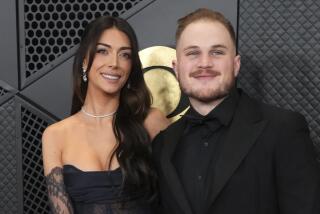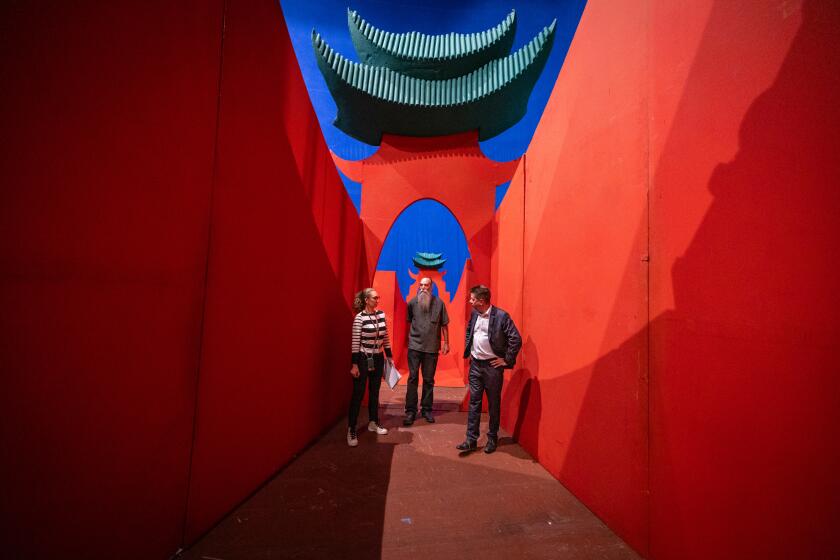Oliveira Covers New Ground in ‘Windhover’ Paintings
Nathan Oliveira’s “The Windhover” series at Pepperdine University marks his first significant appearance hereabout in recent memory. The noted Bay Area painter--now in his late 60s--made his reputation as an offshoot of the San Francisco figurative revival of the ‘50s whose big hero was Richard Diebenkorn.
Like other figurative revivalists, Oliveira mixed recognizable imagery with the emotive gestural brushwork of Abstract Expressionism. Unlike most of them, his figures partook of the spectral existential angst of the postwar European “monster” movement typified by England’s Francis Bacon. Back then the move seemed courageously humanistic.
“The Windhover” paintings find Oliveira having retired the spooky human figures that were his trademark. For some time he’s been preoccupied with images of a small hawklike bird called a kestrel as a metaphor of flight and metaphysical transcendence. The exhibition, organized by Weisman Museum director Michael Zakian, includes about 20 works and is introduced with an 1877 poem by Gerard Manley Hopkins titled “The Windhover: To Christ Our Lord.”
The pictures bring back the specter of a question that was either never asked or never answered in the old days. The hybrid seemed so relevant and compelling nobody cared. It is the question of whether these guys regarded the structure of their art as basically painterly or fundamentally representational.
Since the largest pictures here border closer to pure abstraction than anything of Oliveira’s I’ve ever seen, they amount to an answer. He doesn’t have the chops of a pure painter. His surfaces are dry, turgid and worried. His colors get overmixed into discouraged, disharmonic grays occasionally overcompensated with an excessively melodramatic red.
Any artist pays a price for such a handicap. The good news is that Oliveira is sometimes able to overcome it. His “The Windhover IV” is about 5-by-15 feet. The ambitious, in-your-face format speaks of an artist challenging himself to outstrip his limitations. Somehow, as if by sheer force of will, Oliveira managed to make the thing into a compelling, almost visceral metaphor of the bird-spirit riding the thermals in the yellow dawn. You even get that curious sensation that the sky is not an emptiness but a space. It’s like a poem where the syntax is all wrong but the after-image is sublime.
“Gold Gash” is the most uncharacteristic piece on view. Almost pure abstraction, it’s just a textured field of cardinal red with a yellow gestural line that somehow manages to activate the whole surface into a movement that feels like a chambered nautilus.
The artist seems most at home and most in charge in simple studies of his birds. One of the nicest is “Wing Owl,” which hovers convincingly between the worlds of recognition and hallucination.
Such works are clearly safe for the artist; they provide a place to stand with a certain admiration for an established veteran still willing to take risks.
* Frederick R. Weisman Museum of Art, Pepperdine University, Malibu, through Dec. 1, closed Mondays, (310) 456-4851.
More to Read
The biggest entertainment stories
Get our big stories about Hollywood, film, television, music, arts, culture and more right in your inbox as soon as they publish.
You may occasionally receive promotional content from the Los Angeles Times.






